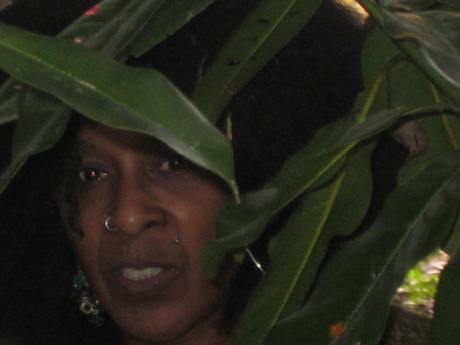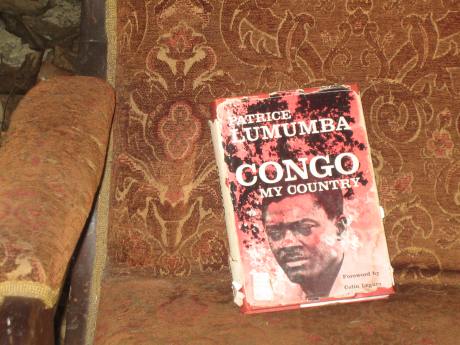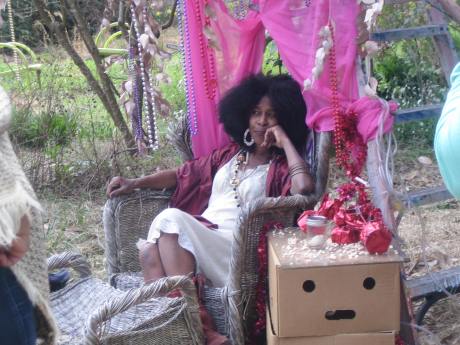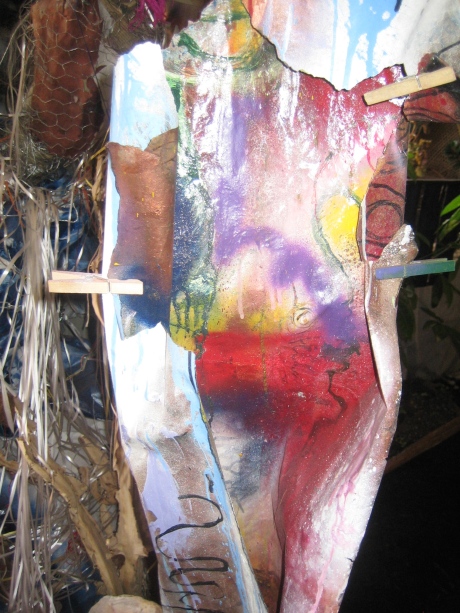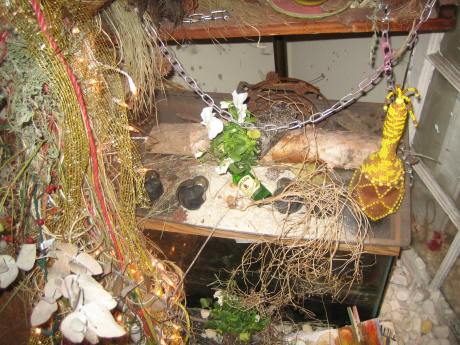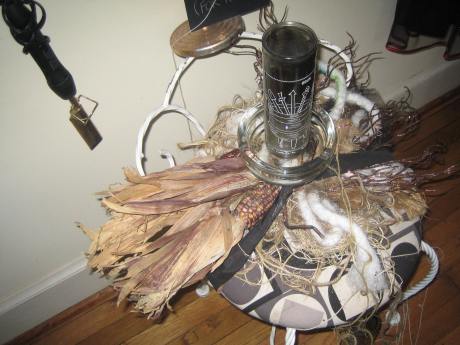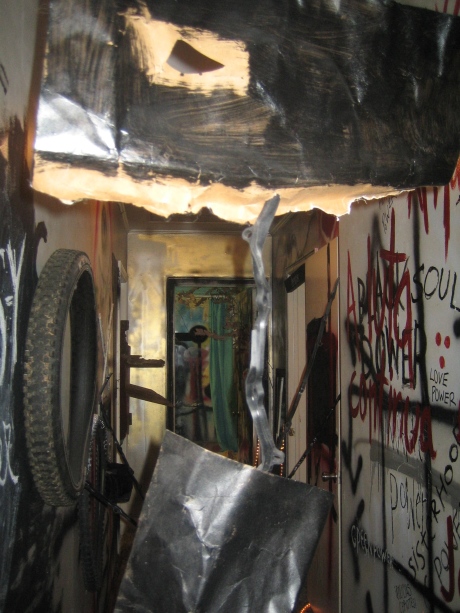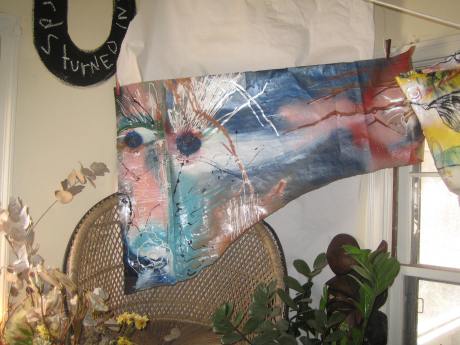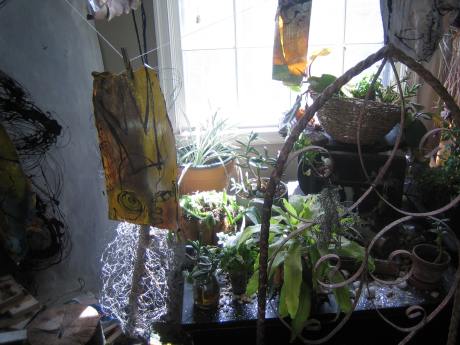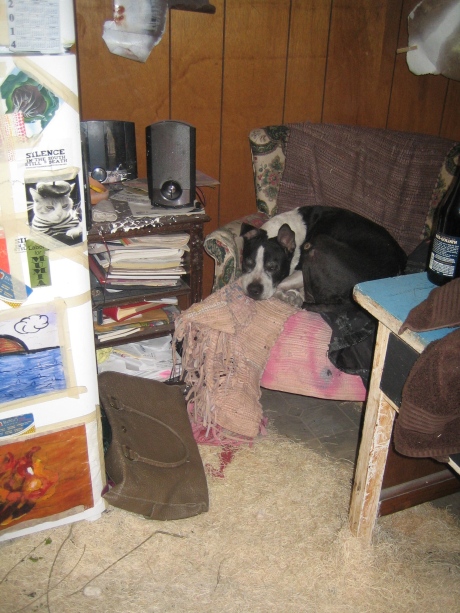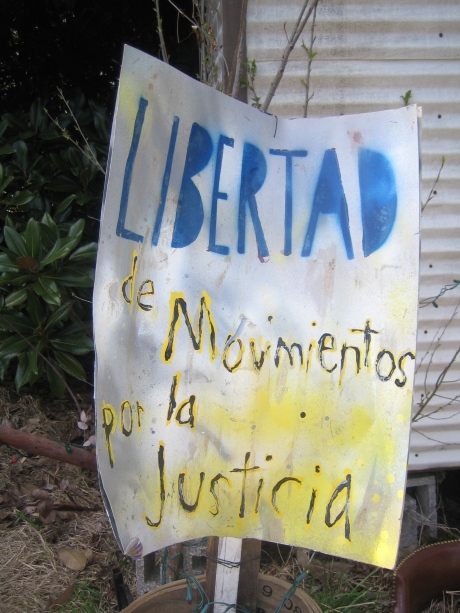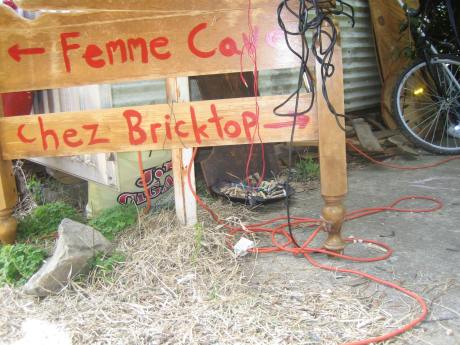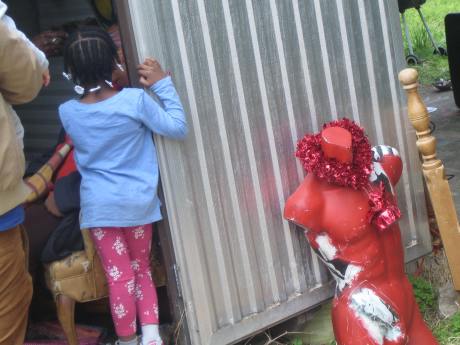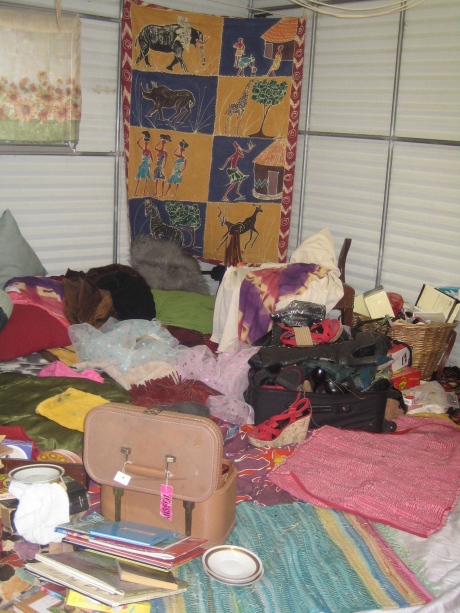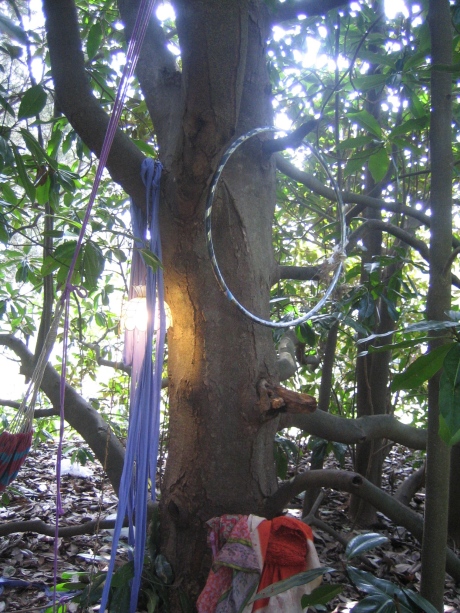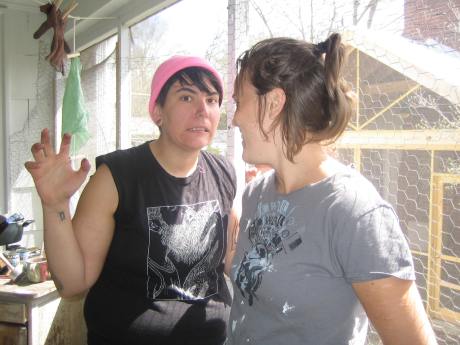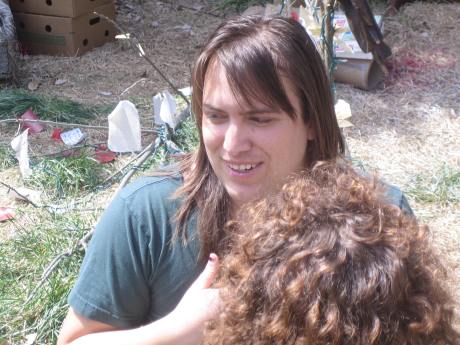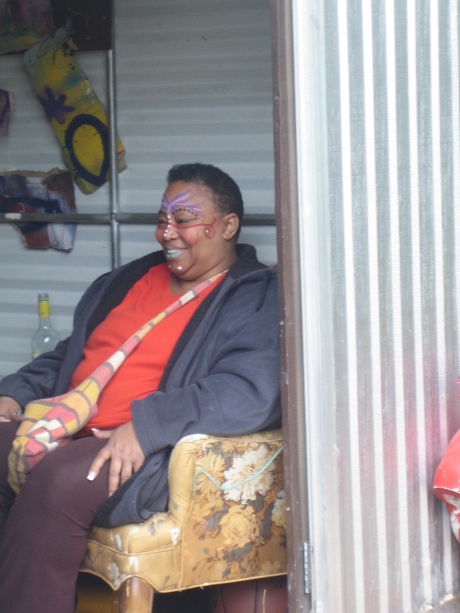Kai Lumumba Barrow
Gallery of the Streets installation. Because of the art, Kai is being evicted. Because of who she is — insurgent, intransigent, irreverent, principled, warrior — her art has become her house, filling every room with a shifting floor of mulch and sand and pebbles, making each doorway a difficult gateway, lowering the ceilings with ropes and wires from which images hang by clothes pins (“I don’t want my art stuck ON THE WALL”), propping books against the walls in stacks, placing books strategically, bringing in pansies (yes) and other growing plants, banners and scrolls of quotations. Even the closets have not escaped.
All quotes are from Kai Barrow, Swan Song Manifesto http://www.organizingupgrade.com/index.php/modules-menu/community-organizing/item/57-kai-barrow
Picture it: A multiracial, multi-gendered, intergenerational group of about 250 people are marching down the middle of the street in a neighborhood of North Philadelphia. The people are a loud bunch, carrying signs that read “Free Mumia Now!” and “Stop the Execution of Mumia Abu-Jamal.” Community members come out on their porch to wave at the group or raise a fist in solidarity. There is a pick-up truck with a loud speaker rigged to a megaphone. People are reciting chants that rhyme and have each phrase and pause dedicated to memory. This performance has become ritualized.
There is a lull. The speaker/chant leader is tired and needs a break. He hands the megaphone to me. I am known for my energy. I hold the dubious title of “Cheerleader for the Movement.” Holding the megaphone, I wanted to see if we could transform our ritual. Could we inspire spontaneity and surprise within ourselves and each other? Could we share with this Black, working-class community whose neighborhood we entered, an expansive vision—one where Mumia’s freedom was tied in with their own liberation? I placed the megaphone to my lips and faced the crowd.
Me: What do we want?
Chanters: Free Mumia!
Me: When do we want it?
Chanters: Now!
[reprise.]
Me: What else do we want?
Chanters: [silence.]
Me: No really. What else do we want? Shout it out. It doesn’t have to rhyme. It doesn’t have to be scripted. Let’s make a cacophony of sound, shouting out our visions of what we want. [pleading] We don’t even have to do it for more than 60 seconds.
Chanters: [silence.]
Actually, there wasn’t complete silence.
A culture of resistance, protest politics and institution-building by people of color, feminists, queer people, and poor people in the 1960s and ’70s filled me with pleasure and purpose. It was a period of design and imagination—a period where people re-envisioned and re-structured their lives. Even as a kid, I knew that things were changing. I saw and felt the electricity of change. Nothing was static. It seemed to me that everything was in question: from diet to living arrangements; interpersonal relationships to altered identities, from the ways that people asserted and responded to power to a new articulation of labor and production. During this period, people reached beyond national boundaries and re-defined themselves as members of a global community (and in some cases, interplanetary community—see Sun Ra). And though these shifts were taking place on different scales and at a different pace, corresponding to class, race, gender, age, geographic location and sexual orientation, everyone was influenced by this cultural, social, political and economic re-imagining. This was a transformative moment, one that unleashed our imaginations and spurred our actions. We saw what we could be….
We were unprepared for the brutality of the State. As beautiful as this period was, we were also powerful enough to pose a threat so significant to the functioning of the State, that it systematically set out to squash our burgeoning revolution. Individual leaders were discredited, driven into exile, imprisoned, and murdered. Intra-and inter-organizational conflict resulted in a weakened movement that we are still recovering. Culture was depoliticized and exploited….
My fifth grade school year was also the time of the 1968 Democratic National Convention. As is the tradition, many young people from throughout the country arrived in Chicago to protest the War and other repressive policies and my family and other residents of the co-op apartment we lived in, agreed to house several of these protestors, among them David Dellinger. After Mayor Richard J. Daley gave the order for the Chicago Police Department to “shoot first, ask questions later,” my new out of town “friends” arrived back at our house broken, bloodied, and angry at the police, the mayor, and a system that shoots and kills its children. I was heartbroken to see people in pain and I too became angry. Later that night, I was awakened by gunshots as the police surrounded our apartment and forced Dellinger out of the building. That day I experienced grief, anger and terror—all directly linked to the violence and abuse of power by the State….
This contradiction creates a “raw opposition” that is explosive. It can change the terms of a space. As organizers, our challenge is to identify the nature of our raw opposition and build/create within the space between oppression and freedom. We are charged with entering the space of raw opposition with clarity, precision, and analysis, passion, energy, and generosity. In Black tradition, this is known as the “Cool.” Think Miles Davis.
Video trailer by film-maker and organizer Jazz Franklin, a preview of Kai Barrow’s “visual opera,” entitled “Gallery of the Streets,” installed in Durham, NC April 3-6, 2014.
https://www.youtube.com/watch?v=YA0CKj2cncg
